Q & A with GEORGIA STEWART

YO, HO, HO and a Bottle of “MOUNT GAY” RUM
THE SHRUB - an EARLY AMERICAN MIXER “Tending Nature’s Bar” with Farm2Cocktail Shrubs

Q & A with GEORGIA STEWART

YO, HO, HO and a Bottle of “MOUNT GAY” RUM
THE SHRUB - an EARLY AMERICAN MIXER “Tending Nature’s Bar” with Farm2Cocktail Shrubs


Sail in the sparkling waters of Lake Greenwood. Swim along sandy beaches. Charter a boat. Drop a line at this top 10 S.C. fishing spot. Paddle the 34-mile Blueway. Walk a scenic nature trail and explore the 915-acre forest.
Lake Greenwood—It’s just another name for fun.
We believe the idea of tradition is ingrained in the souls of Southerners. We have a relentless respect for our deep heritage and an unwavering dedication to living out the traditions of the past.
We believe tradition can be honored while simultaneously welcoming contemporary thought and style and that there is a movement to merge these two lifestyles through intentional, healthy and meaningful living.

We believe happiness is rooted in simplicity. If our minds and places are free of clutter, there is more room for things that matter.
We believe local is better. It’s about being a part of a larger community. It’s about connecting with those who grow, catch, brew and create our food and that closer means fresher, tastier and healthier. It’s choosing fruits and vegetables in season, drinking wines from vineyards in the region, seeking out the work of local artisans and supporting independent, locally owned stores.
We believe in leaving a positive fingerprint. The measure of our success will be the condition on which we leave the world for the next generation.
We believe these thoughts embody the emergence of the “New South” and we’re honored to be presenting this movement in our pages.
Thank you for joining us on this journey.
36-39: BLUEBERRY FIELDS FOREVER

40-44: THE SHRUB - an EARLY AMERICAN MIXER
“Tending Nature’s Bar” with Farm2Cocktail Shrubs

46-51: GETTING the SKINNY on FATS
10-15: LAKE LIVING in the UPSTATE: Discover Your Dream Home on the Water

20-24: YO, HO, HO and a BOTTLE OF “MOUNT GAY” RUM
28-31: Q&A with GEORGIA STEWART
58-63: THE SPIRITUAL BENEFITS of an ORGANIZED LIFE

64-67: WHY I LOVE the GYM One man’s reflections on his penultimate pastime
72-77: TAKING ROOT: How to Propagate Your House Plants this Summer


As the days grow longer and the temperatures hotter, I find myself filled with excitement for the approaching summer. There’s just something special about this time of year that makes me want to kick off my shoes, grab a cold glass of sweet tea, and soak up all the wonderfulness that the season has to offer.
From lazy afternoons spent lounging by the pool to evening cookouts with friends and family, summer is all about coming together and enjoying the simple pleasures of life. Whether you’re exploring a new hiking trail, savoring a cone of freshly churned ice cream, or taking a dip in the ocean, there’s no shortage of ways to revel in the beauty and warmth of the season.
And let’s not forget about the incredible fresh produce that fills our farmer’s markets and roadside stands during the summer months. From juicy peaches and plump tomatoes to crisp cucumbers and sweet corn, there’s nothing quite like the taste of Southern-grown fruits and vegetables in the height of their season. I take great joy in supporting our local farmers and I encourage you to check out not only farmer’s markets, but also “you picks” – there are plenty around the South.
Of course, I’d be remiss if I didn’t mention the iconic Southern porches that beckon us to slow down and savor the simple moments of life. Whether you’re curling up with a good book or simply enjoying the company of loved ones, there’s nothing quite like the magic of a summer evening spent on a cozy porch swing – or in one of the South’s famous ‘Pawleys Island hammocks.’
So, as we gear up for another Southern summer, I invite you to embrace all the wonderfulness that this season has to offer. Savor the warm breeze, soak up the sun, and revel in the joy of spending time with the ones you love.
Here’s to a season filled with laughter, relaxation, and the simple pleasures of life.

Michelle McCollum
CEO & Editor in Chief
Anna Joyner
Artistic Director & Production Manager
Yuka Greer
Managing Editor & Operations Director



Abbey Stevens Editorial Assistant
SOUTH CAROLINA
NATIONAL HERITAGE CORRIDOR BOARD OF DIRECTORS
Don Alexander
Bob Alexander
Donna Livingston
Neal Workman
Ken Durham
Rhoda Green
Dr. Susan Johnson
Hope Blackley
Cover: Mural by Nysa Hicks
SOUTH CAROLINA

NATIONAL HERITAGE CORRIDOR Publisher
Profits from The Southern Edge will go back into the preservation, conservation, and environmental educational programs of the South Carolina National Heritage Corridor.

National Heritage Areas are designated by Congress as places where natural, cultural, and historic resources combine to tell nationally significant stories.
GET
Disclaimer: The content of this column is for informational purposes only. The content is not intended to be a substitute for professional medical advice, diagnosis, or treatment. Always seek the advice of your physician or other qualified health provider with any question you may have regarding a medical condition. The Southern Edge Magazine (TSE) does not recommend or endorse any specific tests, physician, products, procedures, opinions, or other information that may be mentioned on the magazine. Reliance on any information provided by TSE, TSE employees, other contributors appearing on print issues, website, social network, and other digital platforms is solely at your own risk.
A native of Upstate South Carolina, Benjamin Culbreth is a freelance copywriter who writes for multiple corporate clients and news publications. He enjoys spending time outdoors, whether it’s hiking, camping, or taking pictures of wildlife and landscapes. A graduate of Anderson University, he now resides in West Columbia, South Carolina with his wife and dog. benjaminculbreth.com

Jane Jenkins Herlong is a Sirius XM Humorist, bestselling/award-winning author, professional singer, recording artist and professional Southern humorist. A recent inductee into the prestigious Speakers Hall of Fame, Jane is the best-selling author of four books. A former Miss America contestant, Jane’s award-winning singing and comedy is featured on Sirius XM Radio, Spotify and Pandora Internet Radio. For speaking engagements visitjaneherlong.com


James “Jamie” Saxon is a Red Hills and Cotton native of the South Carolina Upcountry, to which he returned after a couple of decades in other places. A graduate of Furman University, the University of South Carolina, and the Cumberland School of Law of Samford University, he has been a college administrator, worked in private practice and public service, and former associate probate judge for Anderson County. He loves books, jazz, food, friends, labs, and his crazy Southern family.

A graduate of both Anderson and Clemson Universities, Darlene has degrees in Journalism and English. She has written professionally for both corporate and news publications for over 35 years. At the same time, she has sought knowledge, training and tools to live a healthier, more spiritually connected life. Certified in numerous energy healing modalities including Reiki, Ama Deus, Access Bars and Intuitive Counseling, Darlene loves helping others find their truth and their life’s passions. She is married, has one grown son, two rescued dogs, Finn (pictured) and Ginger, and two rescued cats, Smokey and Bandit. healingwithsoundsoflove.com

We are always willing to consider freelance photographers & contributors. Please send queries to info@thesouthernedgemagazine.com


Mayumi, a certified anti-aging food advisor and a fermented food sommelier, has lived in Upstate South Carolina and now bases her living in Yokohama, Japan where she continues to spread the philosophy of healthy-eating and share healthy recipes with The Southern Edge. Her motto is to create simple, healthy (calorie, sugar, fat, sodium, etc.) and nutritious recipes that can be made ahead. She maintains her health by exercising, eating healthy, watching calories, avoiding snacks between meals, avoiding food and drinks after 8 pm, and taking a bath for detoxing. She enjoys cooking, photography and hiking.
W. Thomas Smith Jr. is a formerly deployed U.S. Marine Infantry leader, counterterrorism instructor, and retired colonel in the S.C. Military Department. A New York Times bestselling editor and an internationally acclaimed writer whose work has appeared in countless newspapers and magazines worldwide, Tom has traveled to Iraq, the Balkans, elsewhere and other wars. He is also a senior officer with the National Security Task Force, S.C. Floodwater Commission. Among Tom’s many awards, honors, and military decorations, he is a recipient of the Order of the Palmetto. uswriter.com
DARLENEWhether you want to hike to one of the Upstate’s spectacular waterfalls, explore treasured historic sites in the Midlands or take in the summer sun along the coast, South Carolina has a state park for every outdoor enthusiast. With unlimited access to all state parks, plus free admission to historic landmarks and historical home tours at Redcliffe, Rose Hill and Hampton plantations, the ALL Park Passport is the best way to get out and explore the parks.
Learn more and start planning your next adventure at SouthCarolinaParks.com


The new Camp Cedar Creek at Keowee-Toxaway State Park is a gathering spot for any group looking to experience the great outdoors together. The camp offers picturesque views in one of our prettiest parks.

The camp includes a lodge meeting/dining hall with a kitchen area, two picnic shelters, a fishing pier, large group firepit area, three bunkhouse style cabins, ten rustic campsites and a bathhouse with restrooms and showers.

To make a reservation, contact Keowee-Toxaway State Park directly at, 864.868.2605 or KeoweeToxaway@scprt.com.




 by Cole McCollum
by Cole McCollum
If you're looking for a slice of paradise in the Upstate of South Carolina, look no further than its beautiful lakes. The State offers a plethora of fantastic options for lake living with plenty of opportunities for outdoor recreation and stunning waterfront views.


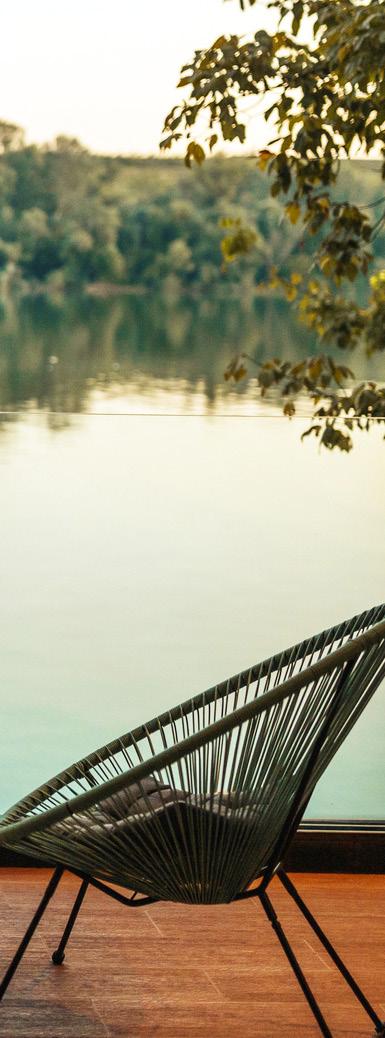
LAKE HARTWELL holds the title as the largest lake in the Upstate, stretching across 56,000 acres and offering 962 miles of shoreline. The lake is shared by both South Carolina and Georgia and is known for its excellent fishing and boating opportunities. Lake Hartwell has many fantastic communities, including Anderson, Clemson, and Seneca, where you can find a variety of real estate options. From cozy cottages to luxurious lakefront estates, Hartwell offers a variety of homes ranging from $199K to $3.9 Mil.
JOCASSEE is another stunning lake located in the Upstate, nestled in the foothills of the Blue Ridge Mountains. As a result of being one of the cleanest watersheds in the world, Jocassee retains crystal-clear water harboring numerous species of sport fish including trout. The untouched natural beauty of Jocasse is augmented from over a half a dozen waterfalls that embellish the 75 miles of shoreline. Jocassee is a bit more secluded, with fewer communities around its shores; unfortunately, the houses surrounding the lake are no longer for sale. Vacation rentals and nearby homes can still be occupied by those who desire to utilize the beautiful lake.
LAKE KEOWEE is a popular lake destination in the Upstate, known for its stunning sunsets and crystal-clear waters. Laurie Santamaria, a local real estate expert, has been a resident on the lake for quite some time.

"I have been an agent for 9 years, helping people obtain their dream of home ownership. I live on Lake Keowee and absolutely love spending time on the lake, hiking on the nearby trails to see the waterfalls, and eating at our many local and amazing restaurants. With 18,500 acres and 300 miles of shoreline, National Geographic ranks Lake Kewoee in the top 10 of the “50 of the World’s Last Great Places''.

Lake Keowee is in extreme demand with listings ranging from $260K to $6.9 Mil. Median home prices surrounding the lake have spiked by 4.5% just in the past few months.
Lake Keowee is a favorite among boaters and watersports enthusiasts, with many excellent marinas and boat rental options available. The lake is surrounded by several charming communities, including Seneca, Salem, and Clemson, making it an excellent option for those looking for a variety of real estate options.
 LAKE KEOWEE
Laurie Santamaria
LAKE KEOWEE
Laurie Santamaria
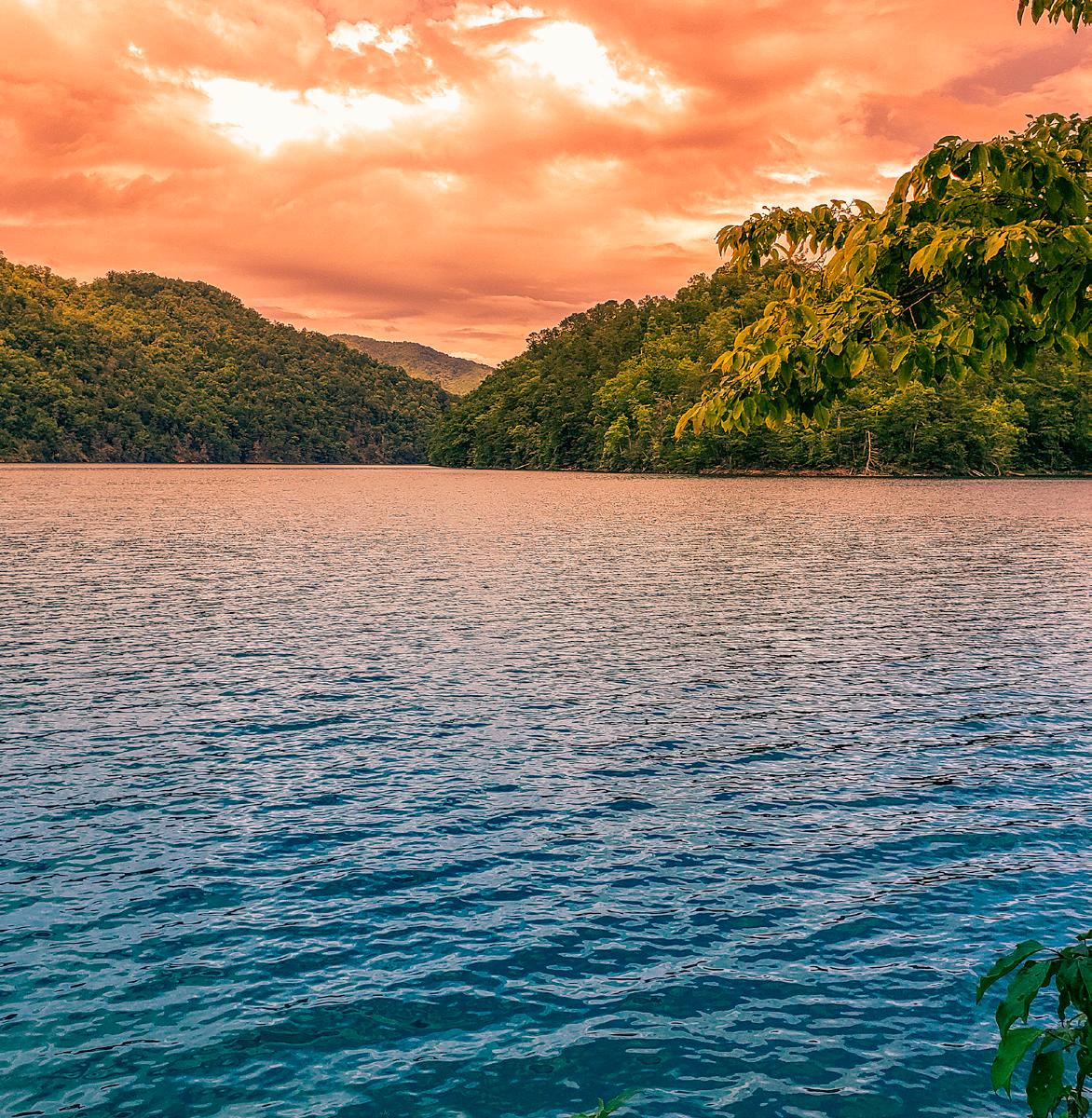


LAKE GREENWOOD in South Carolina is a haven for outdoor enthusiasts, offering fishing, boating, water sports, hiking, and biking trails. Visitors can explore the diverse wildlife and lush vegetation, or simply relax on the sandy beaches. The surrounding area boasts a community of restaurants, bars, and shops for visitors to unwind after a day of outdoor fun. With its stunning natural beauty, diverse recreational opportunities, and vibrant local community, Lake Greenwood has become a beloved hotspot for visitors from all over the country.


The Upstate of South Carolina is home to some of the most beautiful lakes in the country. Whether you're looking for a peaceful retreat or a hub for watersports and boating, there's a lake in the Upstate that's perfect for you. With real estate options ranging from cozy cottages to luxurious lakefront estates, now is the time to discover your dream home on the water. If you're interested in becoming a lake resident, reach out to one of the Upstate’s premier realtors, Laurie Santamaria with Lake Life Realty. Her years of experience in the real estate industry will ensure that your home buying journey runs smoothly and seamlessly. To learn more about financing options, reach out to the Upstate’s number one lender, Cole McCollum with United Home Loan Services.
COLE MCCOLLUM

NMLS# 2395838
United Home Loan Services, Inc.



(864) 353-0385
cole@uhlsinc.com uhlsinc.com
Lake Life Realty
(407) 405-5925
lauriesellsdreams@gmail.com
Lauriesellsdreams.LakeLifeRealtySC.com
Begin your day in the quiet of a Lake Greenwood morning with a cup of coffee and a cruise, just you, a few fishermen and the water birds. Mid-day heats up with skiing, tubing, sailing, kayaking—almost any water sport you can name.

Swim on the sandy beaches, rent a paddleboard or watercraft, or charter a boat for a full day of cruising along the lake. Play all day with the kids at Skippers Jungle Float, where water swings, trampolines and a slide are just part of the fun. There’s even an ice cream boat for a cool, refreshing break.
When evening comes, make your way to a waterfront restaurant to enjoy an amazing sunset and a tasty meal with the friendly locals. Restaurants on the lake give visitors plenty of choices for food, fun and, frequently, live music. Whatever your preferences for waterfront entertainment, Lake Greenwood is the perfect place for a perfect day.
Sparkling blue Lake Greenwood is 11,000 acres of beauty, fun, adventure—and fish.


One of South Carolina’s Top 10 fishing spots, Greenwood holds fishing tournaments every week, even night tournaments. Fishermen flock there for catfish, bass, and crappie. Not sure where to start? Local fishing guides can help you get started, and Lake Greenwood State Park has a tackle loaner program for visitors.

If your family prefers to slow it down on vacation, Lake Greenwood and its Blueway are perfect for a canoe, kayak or paddle board. The Blueway, a 34-mile paddlers’ trail, has eight stops with interpretive signage, kiosks and brochures.
The Connect Lake Greenwood organization holds group paddling events along the lake. Paddle SC maps out 70 miles of beginnerfriendly paddles, with two easy trips on the Saluda between Lake Greenwood and Lake Murray.
This picturesque state park is a great place to start your Lake Greenwood exploration. A three-mile walk or bike trail gives you beautiful views from the land. Sandy beaches provide spots for volleyball and swimming.
You can fish, camp and explore wildlife and wildflowers. Put your boat in the water, take a swim, or have a picnic. The Drummond Center in this CCC-built park is excellent for family gatherings or weddings.

DID YOU KNOW?
Greenwood is part of the Lakelands region, within a 30-45 minute drive of five different lakes, each with a different reservoir of wildlife.
When it’s time to get out of the sun, Greenwood has plenty of fun places to entertain the whole family. With a rich, varied history and strong commitment to the arts, Greenwood offers endless adventures for lovers of history and the arts.


Uptown is Greenwood’s cultural epicenter. with the widest Main Street in the world. It’s a vibrant oasis of restored buildings, one-ofa-kind shops, craft beer and foodie delights. We showcase the arts with events at the renovated Greenwood Community Theatre, The Arts Center and award-winning exhibits at The Museum.
History buffs will want to explore treasures like the Benjamin Mays Historic Site or the Revolutionary War fort and trails at Ninety Six National Historic Site.

After dark, take the family to an oldfashioned dinner and a movie at the 25 Drive In Movie Theater. Stay in your car or bring your lawn chairs and blankets so you can get comfy watching the first-run double features and snacking on their popular pub food menu.
Even away from the water, Greenwood lures visitors outside. Greenways, trails and gardens throughout Uptown and in outlying communities are easy options for the whole family to walk or bike. Pollinator gardens and monarch way stations add to the beauty and fun uptown. And if you’re around in summer, you’re in for a whimsical treat— topiaries! More than 50 magical topiaries, from giraffes to mermaids, will charm you as you stroll the streets of Uptown.

For an easy afternoon, Emerald Farm is a green oasis with shops, gardens, furry friends to meet, peacocks to admire and miniature antique train rides on Saturdays.
Discover Greenwood and find fun for the whole family.



s one of the oldest and most renowned rum distilleries in the world, Mount Gay Rum has a rich and fascinating history that dates back over three centuries. Situated on the island of Barbados, also known as “The Birthplace of Rum,” this iconic brand has become synonymous with Caribbean culture, and its distinct flavors and aromas have earned it a legion of loyal fans around the globe.




The story of Mount Gay Rum begins in 1703 when the distillery was founded by Sir John Gay Alleyne, a wealthy plantation owner on the island. Using the finest ingredients and traditional methods, Gay began producing small batches of highquality rum that quickly gained a reputation for excellence. His unique blend of spices and herbs, combined with the natural sweetness of Barbados sugar cane, created a flavor profile that was unlike anything else on the market.
In the years that followed, Mount Gay Rum continued to grow in popularity and prestige, and the brand became a staple of the Barbadian economy. As the demand for rum increased, the distillery expanded its operations and began exporting its products
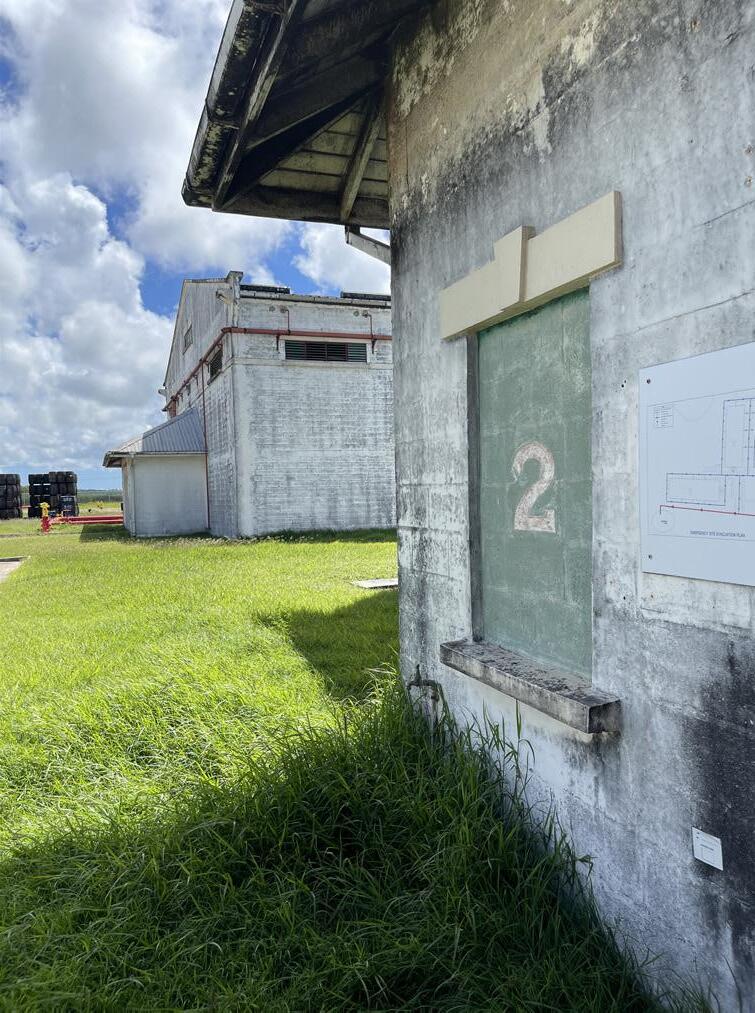

to other parts of the world. By the 1800s, Mount Gay Rum had established itself as one of the premier rum producers in the Caribbean, with a reputation for quality and craftsmanship that was unmatched.
Mount Gay Rum has remained a constant presence on the Barbadian landscape. One of the keys to Mount Gay Rum's longevity and success has been its commitment to tradition and innovation. While the brand has remained true to its roots and continues to use traditional distillation methods, it has also embraced modern technology and techniques to improve efficiency and quality. This combination of old and new has allowed Mount Gay Rum to remain relevant and competitive in an ever-changing market.
Fermentation – the natural metabolic process in which a bacteria, yeast or other microorganism converts a carbohydrate, such as sugar, into alcohols and carbon dioxide, under the right conditions. This first allimportant stage is when the rum’s personality develops, requiring skill and expertise to draw flavors out of molasses at proper proportions. From the grassy hilltops in St. Lucy, five wooden vats breathe in the Barbadian flavor from the open air. To begin the fermentation process, proprietary yeast is utilized, but unlike the controlled fermentation, the environment controls the yeast’s growth. It is the natural environment that imbues the rum with its characteristic taste. Mount Gay alone is home to this atmosphere that no other distillery can replicate.
In Barbados, the average temperature is 86 F, and the rums evaporate at a rate of five times faster than the rate of a typical cognac or whiskey distiller. During maturation a portion of rum can be lost through evaporation. The distilleries refer to this portion as the “Angels’ Share.”
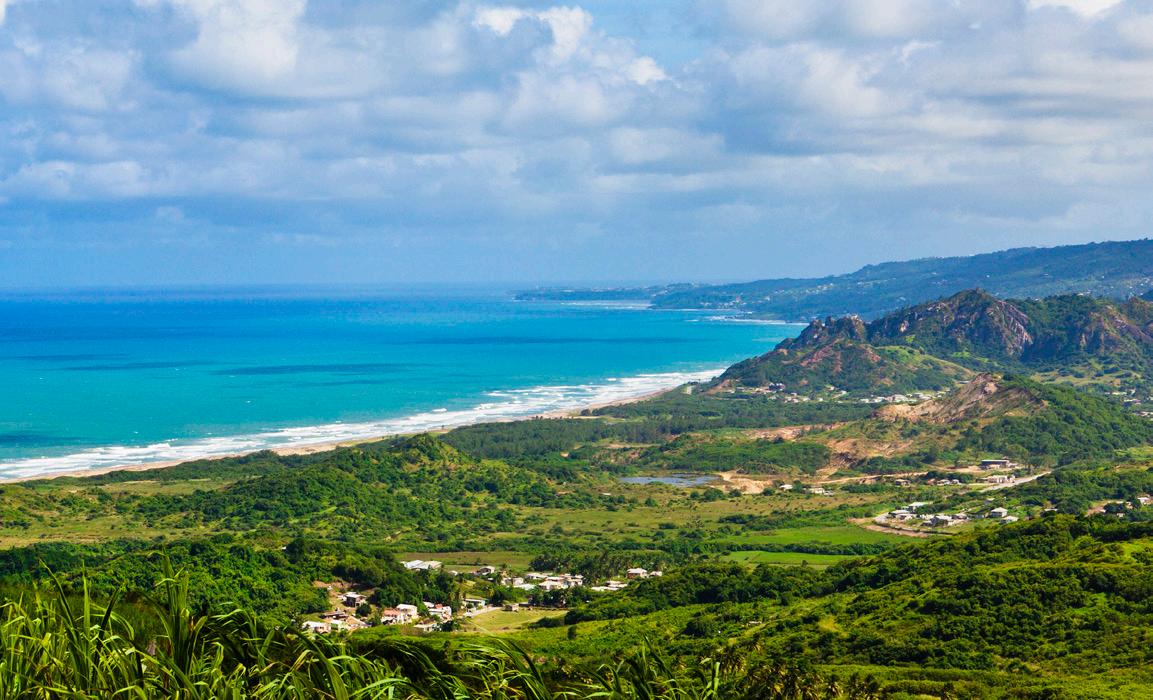



As the world's love affair with rum continues to grow, Mount Gay Rum shows no signs of slowing down. Today, the distillery is a popular tourist attraction, welcoming visitors from around the world who come to sample its famous rums and learn about its fascinating history. With its rich past, timeless quality, and commitment to excellence, it is sure to remain a beloved brand for generations to come. Whether sipping a classic cocktail or enjoying a straight pour, one thing is certain: when it comes to rum, there is no substitute for the taste of Mount Gay.


16 oz. Mount Gay Eclipse
2 oz. Cointreau


8 oz. Pineapple Syrup
8 oz. Lime Juice
4 oz. Chilled Water

12 oz. Brut Champagne (or one 375ml bottle)
For pineapple syrup, add one and a half cups water, one cup sugar, and one lemon peel to the pot and bring to a boil. Add pineapple and simmer until pineapple is just translucent. Press the pineapple to release the juices. Strain out solids and let cool.
Add all ingredients to a punch bowl or cocktail pitcher and stir until incorporated. Garnish with pineapple slices, cinnamon sticks and lime wheels.













Gullah Geechee people are direct descendants of Africans brought to the United States and enslaved for generations. Their diverse African Roots and enslavement on isolated islands created a unique culture that is embodied and displayed through cuisine, music, and performing arts, language and oral traditions, crafts and religion and spirituality.




The world of fashion is no stranger to emerging talent, but every so often, a young designer comes along who has a certain spark, a unique vision that sets them apart from the rest. For Georgia Stewart, a rising star from Charleston, South Carolina, that spark has already ignited a bright future in the fashion industry.
At just 18 years old, Georgia has already made waves with her debut designs showcased in a local fashion show. But rather than rest on her early success, Georgia is taking the next step in her career by enrolling in college to hone her skills and build her brand.
From her eye-catching designs to her unwavering drive and determination, Georgia is a force to be reckoned with in the world of fashion and design. Join us for this Q&A with Georgia as we take a closer look at her journey so far and what the future holds for this young designer.
 with Georgia Stewart
Photography by Bella Natale / Saltina Graphics
with Georgia Stewart
Photography by Bella Natale / Saltina Graphics
I have always been artistic. As a kid I was very much into music and then my interests turned towards the visual arts. I had a passion for looking through fashion magazines at a young age and even had a fashion design notebook by the time I started middle school. My obsession has grown from there.
I am very lucky to have had the opportunity to attend the Charleston County School of the Arts. My older sister attended, and it inspired me to apply as well. I’ve learned a lot there.

It’s not a complicated process. I start with what message I want to tell through a new collection or the vibe I want to showcase. It all starts with this message, then I search for inspiration wherever I can find it. I create dream sketches with no limits - no limits on material, design elements, or cost. From there I begin designing. I do it all in free form with no patterns and I simply tweak as I go along. I drape the fabric on mannequins and determine how the fabric is sitting on the body, how it complements the body, and how it flows. I make adjustments until I’m happy with the look and by the end it looks nothing like what I originally envisioned.
This collection was inspired by the Roman Goddess Venus – the goddess of love and sexuality. I really wanted to do a very feminine collection showcasing the beauty and power of women through the design. And I wanted the collection to make women feel both strong and beautiful.


For this collection I used light, movable fabrics. I wanted a satin look that would flow easily as the woman moves. I also went with white colors with a pop of bold color.
I see myself focusing more on day-to-day fashion, whereas my school assignments have been more focused on runway designs. But I love feminine fashion, so I will most likely focus my work on a women’s only clothing line.
I have been accepted into SCAD (Savannah College for Art and Design) in Savannah for studies in architecture and interior design, but I will most definitely continue with fashion as well. I’m excited to try out a different field of design. I might possibly even build a career creating brands and designs for high-end hotels. It will be exciting to see where my studies take me and I’m thankful for all that I’ve learned at the Charleston School for the Arts.
Charleston County School of the Arts is a public arts magnet school for Charleston County students who audition and are selected for one of nine arts majors in grades six through twelve: band, strings, vocal, piano, theater, costume & fashion design (high school only), visual art, creative writing, and dance.
The Costume & Fashion Design Major was built from the ground up through the trailblazing work of Marie Nichols. It began as an elective course in a trailer with her own sewing machines and is now in it’s ninth year.


In this multidisciplinary major, students learn the foundations of fashion design, figure drawing, garment construction, couture sewing, fabric draping, working with flat pattern design.
Prior graduates of our program are attending the most prestigious art and design schools in the world such as SCAD in Savannah, GA, Rhode Island School of Design, Central St. Martins in London, the University of North Carolina School of the Arts, Massachusetts College of Art & Design, and Fashion Institute of Technology in New York City.
I am so excited that Georgia is continuing her education in design at SCAD. She is very talented with a keen eye for color, texture, and movement. Her style is blend of feminine elegance and a touch of urban streetwear. Very cool! Without a doubt, she has a successful career ahead of her.



“I will graduate with Honors,” said our son Holmes proudly.
“Need I remind you that you have an F?” I said. “Okay, Son, I’ll bet you a cruise that you will not graduate with Honors.” Thomas shot me a look that years of married life had taught me to interpret: the “have you lost your mind” look.
A week later, we all gathered in the high school gym to witness the graduates receive their scholarships and awards. Holmes turned around and said, “Daddy is coming, right?”
“Yes,” I answered. “He’ll be here.”
When Thomas arrived, Holmes gave him the “thumbs-up” sign. Thomas looked at me and I reminded him, “Holmes has an F. We’re safe. There’ll be no cruise.”
The ceremony began. Eventually, the time arrived for the last and most important announcements— the Honor graduates. Last names beginning with the A’s, then B’s, and so on. Then the guidance counselor started on the H’s . . . Holmes Herlong . . . Thomas and I stared at each other in disbelief. Just as if Holmes had thrown the winning pass at the last second of the Super Bowl, he jumped up and announced to the entire crowd. “I’m going on a Caribbean cruise!”


After the ceremony and still in shock, Thomas and I practically assaulted the guidance counselor. In unison we demanded, “Re-average his grades!”
My bet with Holmes became reality a few weeks later. We boarded the Sovereign of the Seas, the Royal Caribbean ship that housed more people than the town of Johnston.
Two words describe our cruise—big and small. The ship was big but the rooms were small. Big people ate lots of food. Bigger people ate lots and lots of food. We had a large amount of fun with small toys—Jet Skis to be more specific.

One day we rented two Jet Skis and enjoyed a highspeed adventure. Thomas knows two speeds: stop and hold-on-and-pray. When we ski, he’s either at
a dead stop or flying down the slope. Whether he’s on the top of the Rockies or in the beautiful, blue waters of the Caribbean, Thomas has a need for speed.
Well, well, well, after being jolted around like a ragdoll on the back of a Jet Ski, I had an unexpected epiphany. I finally understood what it felt like to wear a thong, but unfortunately, it wasn't because I chose to wear one. Thanks to the Jet Ski's bumpy ride, my swimsuit had ridden up so high that I might as well have been wearing a thong! Let's just say, it was a cheeky experience. After making adjustments to my “swimsuit,” I decided it was my turn to drive, time for Thomas to experience the joy of feeling out of control on the back of that thing while tugging on his trunks.
When the Jet Ski stopped, I jumped into the water. All of a sudden, Thomas yelled the unthinkable, “Shark!”
“Oh, stop it!” I commanded.
“No, really!” Thomas retorted. “It’s right under you. It’s the biggest one I’ve ever seen!” I panicked. “Thomas, help me get back on the Jet Ski!”
Thomas just stood there and pointed. He was so taken with the size of the shark, he didn’t do one thing to help me hoist myself onto the back of the Jet Ski. Thankfully, I remembered what the instructor said about getting back on the ski: one knee on the back and then pull up on the seat. It was a miracle that I remembered that bit of information
with my heart pounding and my fist ready to pound Thomas. I thought, I’ll show him! I’ll teach him a lesson and let that shark attack me. Then he’ll be sorry! I even wondered if he’d taken out a shark policy on me before we left home! It’s amazing what stupid things you can think up.
With all my strength I maneuvered myself back onto that Jet Ski. “I can’t believe you just stood there without helping me.”
Again Thomas said, “Just look at the size of that creature!”
To my relief I looked into the crystal clear Caribbean water and saw the biggest starfish I’d ever laid eyes on. “That’s a starfish!” I said to Thomas.
He looked so aggravated and said, “I said starfish, Jane!”
“You said shark!” I shot back.
“Oh,” said Thomas rather sheepishly. “I meant to say starfish. I wondered why you had such a big reaction to something as small as a starfish.”
We can excuse all the folks from other regions of the country who think Summer is the only season we have down here. They’re not all that wrong. We have a couple of weeks of winter, but not one any northerner would recognize. We have about 2 ½ days of spring which can happen anytime between The Masters in April, the Kentucky Derby in May or even as far along as Memorial Day, depending on Mother Nature’s whims. Fall, beloved as it is in part of the south in the mountains, and those of us who’d like to spend autumn in the mountains is, what, three weeks total? But Summer? Summer is all the time in between.
People of a certain age, before fire ants made their way here in the 1980s, went barefooted everyday but Sunday, and then wore shoes only for church. Shorts were worn, sometimes as late as Christmas Eve—again, except for church. Summer was, and is, for frisbees, fishing, tennis, golf, hiking, swimming, going to the beach or mountains, for cooking out (which we now down here is not the same as barbecuing), picnics, outdoor concerts, boat rides, drifting on rivers in an innertube. And Summertime is for Beach Music, that quintessential sound born here and enjoyed by every generation. The same music to which our parents shagged in the 1950s is the same as we shagged to in the 1980s, and is continues today; The Drifters, Chairman of the Board, The Swinging Medallions, The Catalinas, The Tams, The Embers, and more than I can remember. Who cares that some think it all started with Motown—we know it started in Myrtle Beach, South Carolina, in the 1940s, as a glorious mix of African, jazz, country, and big band music. The shag is one of the few dances, maybe the only one, where a fellow can hold his girlfriend and his drink and spill neither.
For a long time, the Summertime meant sweltering heat and humidity thick enough to spread on toast, with the only respites being iced tea and other cool beverages, sitting on a porch or in the shade hoping for at least a hint of a breeze, or going to stores and movie theatres with air conditioning. One Anderson, South Carolina, department store, long defunct, had signs in its front window advertising that it had “refrigerated air” for shoppers’ comfort. First came affordable air conditioning window units, then, hallelujah, central air conditioning. I’m not all
that old, and went to the best of schools, but I didn’t attend an air conditioned school until the ninth grade. Even in college, only one men’s dorm was air conditioned, though all the women’s dorms were. Don’t get me started on the fact we all paid the same amount to be a Paladin. My daddy much preferred open windows and fresh air, but fortunately our mother was pregnant with my little brother in the middle of summer (he was born in August), and with just a few raised eyebrows and soft words, voilà, the coming of air conditioning.

There are many who argue that air conditioning ruined the South because it sent us scurrying inside where we’d no longer sit on porches talking with our neighbors, enabled us to work and move faster than the so-called good old days. There’s some truth in that, but I’m not about to give up air conditioning. I still laugh remembering the northerners who came to South Carolina when I was in graduate school. Their homes weren’t air conditioned, nor were their cars. They chuckled at watching us move slowing walking in the middle of the day, planning outdoor activities or chores for early morning or the relative cool of the evening. Chuckled, that is, until they experienced the Screen Door to Hades, otherwise known as Columbia. With no evidence to support it, my suspicion is that the powers that were chose to move the capitol from Charleston to Columbia to ensure politicians would be miserable and would return soon to their hometowns.

If you lovely readers engage in any of the summertime activities mentioned above, you probably have all the equipment you need. Still, the hardware stores will be filled with people buying the latest lawn mower, lounge chairs, patio and deck furniture, collapsible canvas wagons, coolers of every size, and folding chairs for concerts and outdoor festivals. You can make a picnic basket of almost anything, including an ancient suitcase. What is a picnic anyway, but a tailgate without the necessity of a tailgate? Oh, but you’ll have to make your own frog gigger—one hung above my desk for several years in the late 80s.
Another thing for which southerners are famous in summertime is attire. Clothes are loud and colorful. Bring out the madras, the linen, the sundresses, the seersucker; put away the socks and stockings (do any women still wear stockings?) and get out the boat shoes, flip flops, sandals, rain or duck boots for the pluff mud, or these incredible things made of some sort of light canvas that slip on and are machine washable. I’m strongly in favor of bringing back all sorts of convertible cars, but those dang Detroiters don’t need them.
Summertime also is a time when we read, perhaps naturally because we birthed or raised so many wonderful writers and poets. Some of those authors had a lot to say about summertime. DuBose Heyward thought the living was easy, the cotton was high, and her mother is good lookin’; Roy Blount Jr. calling humidity the “south’s blanket; Miss Welty, in No Place for You, My Love, a would-be-adulterous couple are “bathed in sweat and feeling the false coolness that brings’; Pat Conroy said “walking the streets of Charleston in the late afternoons of August was like walking through gauze or inhaling damaged silk”; Russell Baker thought “[a]h summer, what power you have to make us suffer and like it”; The philosopher Kenny Chesney sang “[i]t’s a smile, it’s a kiss, it’s a sip of wine … it’s summertime”; even F. Scott Fitzgerald, who loved and lived in the south, and married one of our most famous belles wrote “[t]here she was—the Southern type in all its purity … She had the adroitness sugar-coated with sweet, voluble simplicity, the suggested background of devoted fathers, brothers and admirers stretching back … the unfailing coolness acquired in the endless struggle with the heat. There were notes in her voice that … withered up Yankee captains, and then soft, wheedling notes that mingled in unfamiliar loveliness with the night.”
Front porch or not, air conditioning be damned, let’s get out there this summer and mingle.

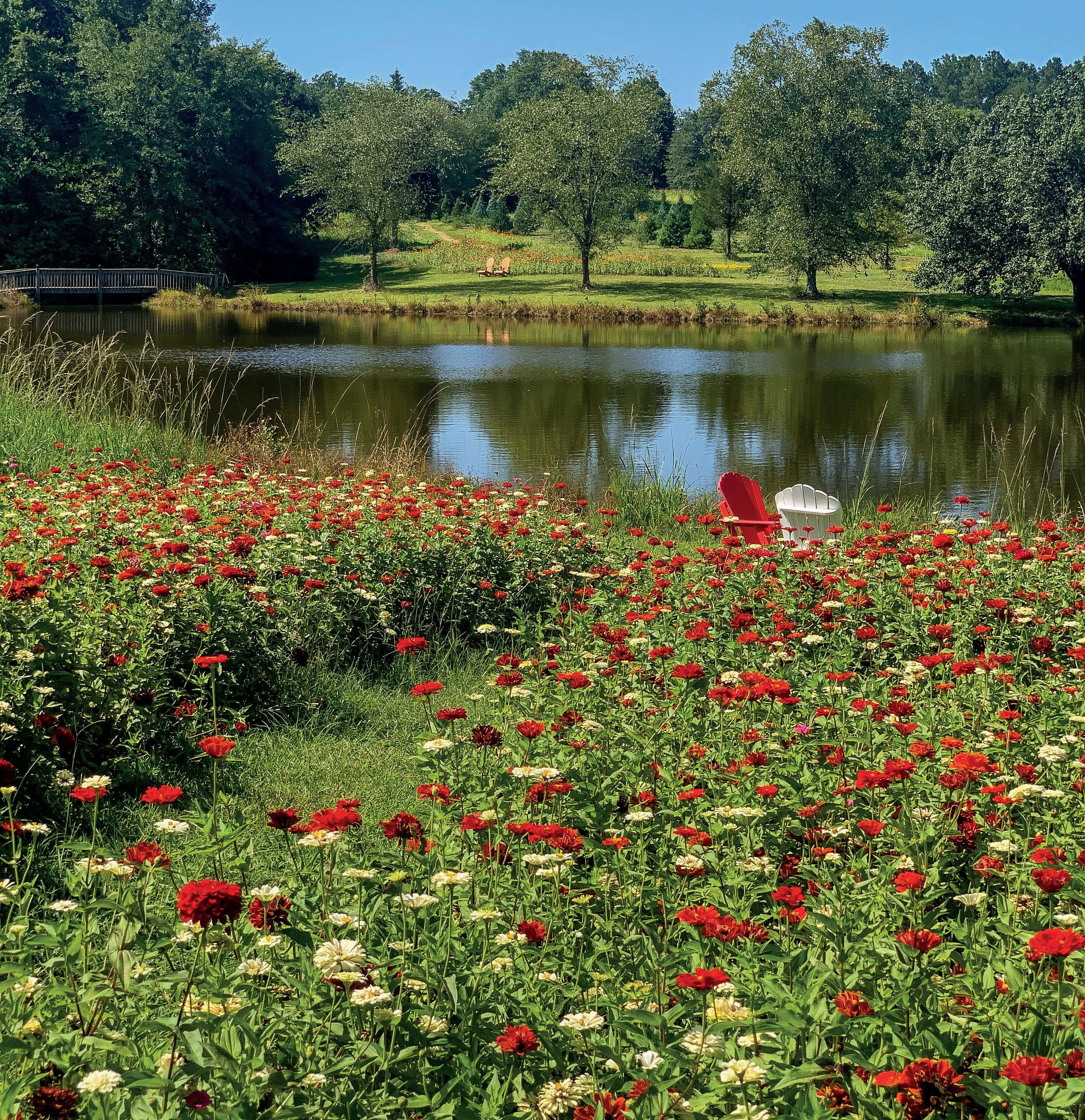

Words by Yuka Greer / Recipes by Mayumi
In May, we honor military personnel on Memorial Day. In July, we commemorate the signing of the Declaration of Independence. So, what do we celebrate in June in South Carolina? Blueberry harvest! Blueberries in season have a perfect balance of sweetness, tartness, and acidity for all those healthy - and not so healthy – summer recipes. So, grab your family or a group of friends and make your way to a blueberry farm this summer!


This has been an annual event for my family for years and is a tradition we started when my daughter was young. I remember our first picking as we walked down the rows in search of the “perfect bush” with the tastiest berries. I was on one side of a row and my husband on the other side and while we debated who was finding the best berries, our daughter who was short enough to walk under and through the bushes, reached up with a cluster of ripe blueberries and delivered the verdict; “this one is the sweetest!”
Fast-forward to the present, my daughter is taller than I am now, and we all must bend over to search for the best berries. But we still love the competition.
Don’t forget to add a few dollars at the checkout to make up for the ones that ended up in your belly and not your basket.
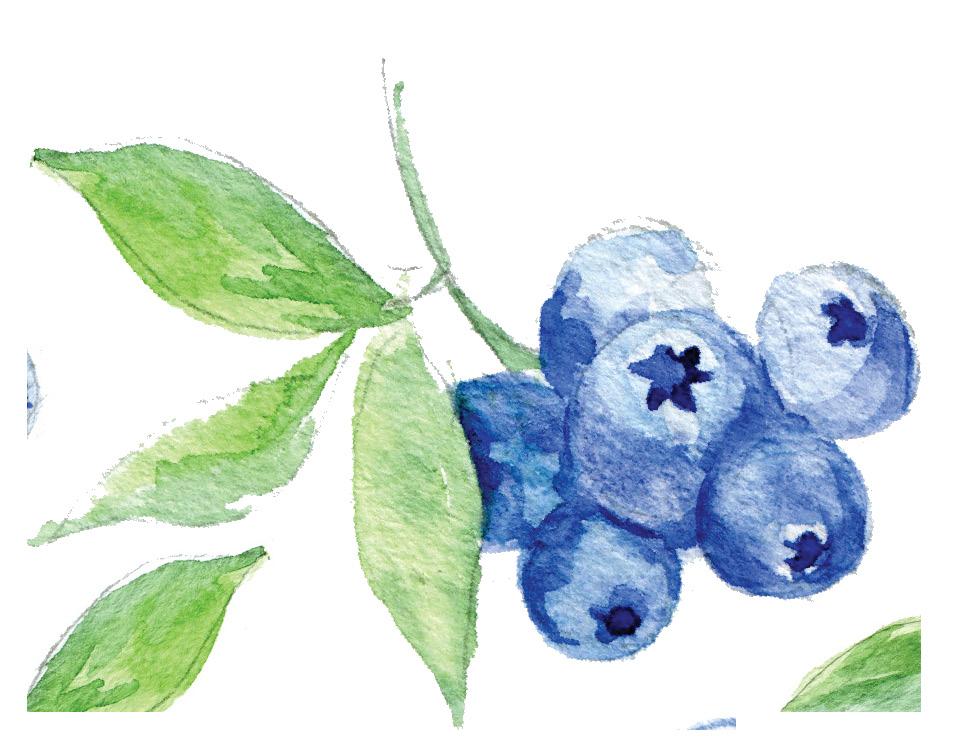


Nothing tastes better than food/desserts made from fresh ingredients. Pick one recipe that you love and make it as many times as necessary to perfect it. You could stick with a traditional blueberry pie or you could try something different like the recipes from our anti-aging food advisor, Mayumi. It will become your family’s iconic summer recipe and June is the perfect time to make it. Just make sure to keep aside the amount you are going to use for the recipe IMMEDIATELY after you come back from the blueberry picking. Otherwise, if your family is like mine, they’ll quickly disappear from the fridge.
Freezing your freshly picked blueberries is a great way to enjoy them all summer. I follow the steps below to freeze mine.

1. Gently wash and drain blueberries.
2. Pat dry off the water with paper towel.
3. On a rimmed baking sheet, carefully place blueberries in one layer, keeping the berries separate from one to another. Put the baking sheet in the freezer.
4. Once frozen, transfer to a food storage container and keep it in the freezer.
Voila! You could use them for smoothie or grab a small amount as use as a topping on your favorite salad. Happy pickin’.
If you want a modern twist to traditional crepes, try this one from our anti-aging advisor, Mayumi. Confiture is one way of preserving fruit by cooking it in sugar like jam and preserves, derived from a French word “confire”, meaning to “preserve”. Leftover confiture – or double the amount so that you have leftovers – is perfect on yogurt, waffles, or pancakes.

Ingredients:
• 1 6-ounce pack blueberries
• Three 3" lavender stems (stem part only, use flower for garnishing)
• 3 tablespoons Red Wine
• 6 tablespoons sugar
• 1 tablespoon lemon juice
Instructions:
• Place blueberries in a saucepan. Add sugar. Let it stand for 30 minutes.
• Add the remaining ingredients. Cook at medium-low heat for 10 minutes.
• Serve with the crepes. Store leftover confiture in a sterilized container.
Ingredients:
• 2 eggs
• 1 cup milk
• 4 tablespoons sugar
• 1 cup flour, sifted
• 3 tablespoons butter, melted
Instructions:
• In a bowl, add the eggs and sugar. Whisk the ingredients well.
• Gradually add milk and then the melted butter.
• Add the sifted flour and with a whisk mix all the ingredients.
• Cool the batter in a refrigerator for 30 minutes to two hours.
• Heat a lightly oiled frying pan over medium heat. Pour a ladleful of batter into the pan, while tilting and swirling the pan to coat the bottom with the batter. Cook at a low heat for 1 1/2 minutes on one side and 1 minute on the other side until lightly browned.

for a 7" x 3.5" x 2.5" loaf pan
Ingredients:
• 1 6-ounce pack blueberries
• 2 Apples, peeled, cored, quartered, and then, thinly sliced with a knife or mandoline
• 2 eggs
• 1 4/3 ounces (50 grams) granulated sugar
• 2.65 ounces (75 grams) flour
• 2 1/2 ounces (50 grams) butter, melted
• 1/2 teaspoon vanilla oil
• 1 teaspoon Cointreau (Orange liquor) or Rum
• Demerara Sugar for sprinkle, optional
Ingredients:
• Preheat the oven to 360°F/180°C.
• Lightly grease pan or line the bottom and side of pan with parchment paper.
• Add eggs and sugar and mix well. Add ½ of the flour and whisk well. Add the other ½ of the flour and whisk well.
• Gradually add milk and melted butter and mix. Add vanilla and Cointreau or Rum. Add apple slices and mix with batter.
• Pour a small amount of batter into the loaf pan. Arrange a layer of apple slices without overlapping. Add another layer of the apple slices. On top of the apple layers, arrange a layer of blueberries. Finish with one more layer of apple slices. Pour the remaining batter from the top into the loaf pan. Note: There will be some leftover blueberries. Save for garnishing.
• Bake in the preheated oven for 45 minutes. Cover with aluminum foil if the top is about to burn. Transfer the pan to a wire rack and cool completely. Cover and refrigerate for at least two hours.

"TENDING NATURE'S BAR" WITH FARM2COCKTAIL SHRUBS

 Words by Darlene Greene
Words by Darlene Greene
Originally a shrub was a medicinal cordial. Early Americans popularized shrubs since the cold process was a simple way to preserve fruits and herbs with sugar and vinegar. The mixture was sometimes referred to as “drinking vinegar” and would be added to wine, brandy or other spirits. It could also be added to plain or carbonated water for a refreshing non-alcoholic beverage.


Carlton Chamblin, owner and creator of Farm2Cocktail, says that “shrubs date back as far as the Babylonian era, but colonial Americans popularized the shrub preservation process. Colonists created specialty drinks, now known as cocktails, by mixing the vinegared syrup with a variety of spirits or just plain water. Shrubs are slightly acidic and have a low sugar content which make them ideal mixers.” Chamblin is a native of Birmingham, AL and “has backgrounds in art history, marketing, and the food and beverage” industry. He loves “all things culinary.”

As a veteran bartender, Chamblin has always looked for novel and refreshing combinations to share with his customers. His interest in creating natural mixers that utilized fresh, quality ingredients led him to create Farm2Cocktail Shrubs. The company produces and bottles a variety of flavors made with the age-old process the colonials used which means low sugar and no preservatives. Our shrubs are “refreshing, tantalizing and versatile,” says Chamblin.

“You can add the shrub flavor of choice to gin, vodka, plain or carbonated water. You can also flavor yogurt, create salad dressings, marinades or mocktails using the shrubs,” said Chamblin. “I like listening to my customers and hearing what appeals to their palates. I create combinations from their feedback. We offer peach/ lavender, strawberry/peppercorn, blackberry/ rosemary, cucumber/mint, cran-orange spice, blueberry/lemongrass, and vanilla/pear. We also work to be sustainable by utilizing the leftover fruit from the shrubs to make fruit spreads. The spreads are an excellent addition to a cheese or charcuterie board.”
Chamblin considers himself an agent of hospitality, creating great experiences for people whether at a festival, a mixology class or special event. Farm2Cocktail offers bartending services for weddings and large events as well as small parties or dinner with friends. Chamblin also recommends using shrubs at home to create your own specialty drinks saying you should “embrace your inner mixologist and trust your instincts. Have fun and enjoy entertaining your friends and family with your own combinations.”
1 OZ CUCUMBER MINT SHRUB

2 OZ LIGHT RUM

JUICE OF 1 LIME WEDGE MUDDLED MINT

Combine all ingredients in a shaker and shake with ice. Strain into glass, top with lemon lime soda.
IN SHAKER MUDDLE 4 SPRIGS OF MINT AND ADD
1.5 OZ OF CUCUMBER MINT SHRUB
.5 OZ LIME JUICE
6 OZ WATER OR CLUB SODA OR GINGER ALE STIR WITH ICE AND POUR ALL TO GLASS
The Farm2Cocktail.com website offers all the products as well as recipes, a list of the festivals and events where Chamblin and his team will be demonstrating the shrubs. You can also sign up for their newsletter to learn about new products and recipes. Farm2Cocktail is based in Clayton, GA and Chambin travels around the Southeast working events and festivals. “Tending nature’s bar” with the sweet, tart flavors of Farm2Cocktail shrubs is sure to make your next gathering a special and fun experience. Enjoy!
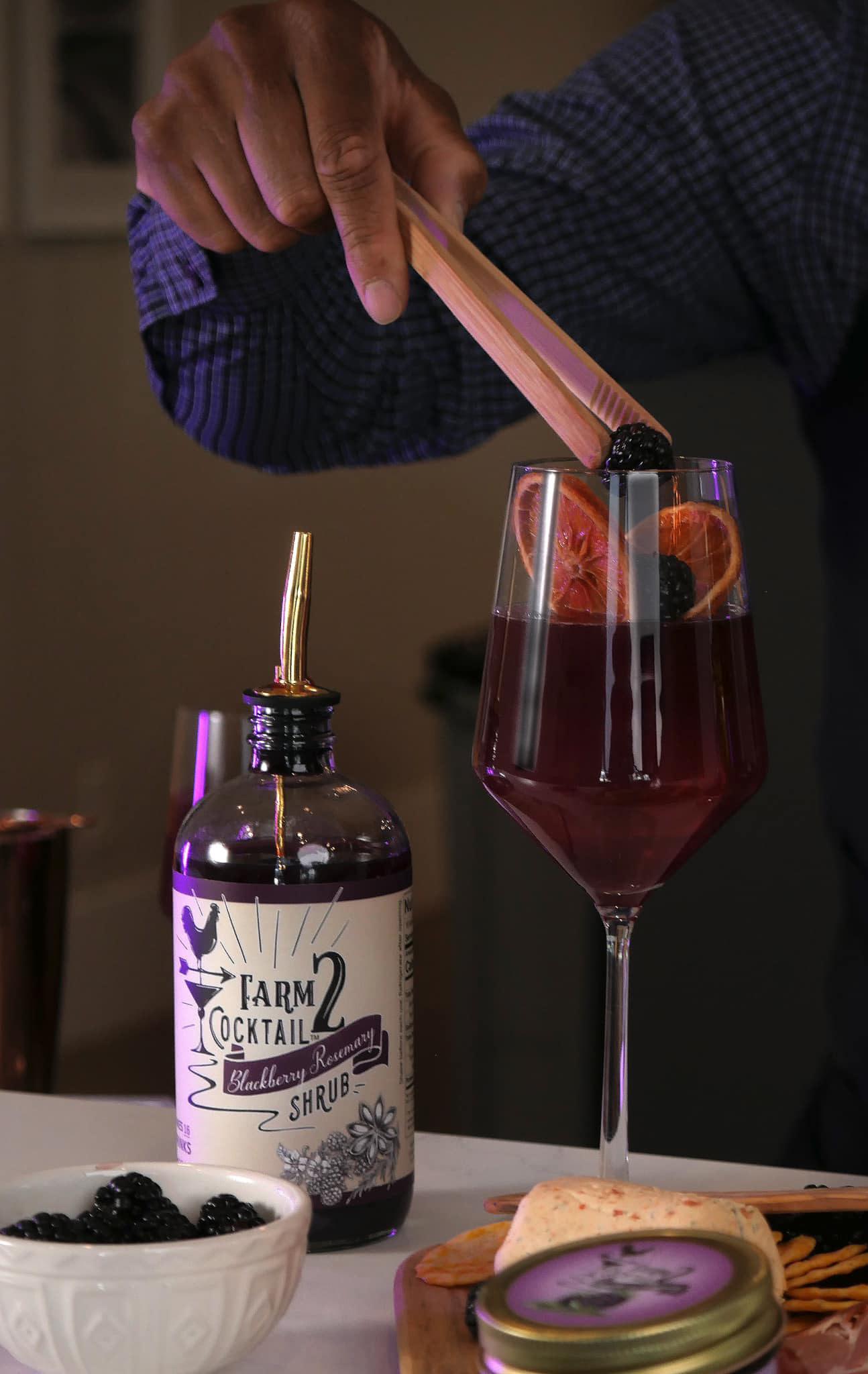









Like much of South Carolina in the summertime, even in the early morning hours the humidity and calm warm air offers a not-sosubtle hint of what is to come later in the day. This explains why the parking lot at the Forks Area Trail System is already filling up. Local residents and out-of-state visitors alike are enthusiastically preparing their mountain bikes as they get ready to take advantage of one of the most outstanding recreational opportunities anywhere in the region. Fondly referred to as FATS, this trail system in the Sumter National Forest were designed with the lovers of mountain biking in mind. Located less than 10 miles north of I-20 near North Augusta, this 37-mile trail system consists of half a dozen interconnected trails that twist and turn through the surprisingly rugged Piedmont landscape just above the Savannah River in South Carolina’s Edgefield and McCormick counties.


Many of the system’s descriptive trail names, such as Great Wall, Brown Wave, and Big Rock provide clues of what riders can expect from their experiences. Brown Wave, for example, is said to have gotten its designation because it “feels like surfing on a bike.” According to the Central Savannah River Area (CSRA) chapter of the Southern Off-Road Bicycle Association (SORBA), “FATS is a great place to get beginners hooked on the sport, and the excellent flow, pump track like feel, and high-speed sections combined with lots of mileage keeps bringing the seasoned riders back for more time and time again.” Paul Farrow with SORBA-CSRA says, “FATS is like a rollercoaster. You first start from the trail going flat, then you begin the downhill which is fast and flowing. Once you are near the river you start the climb back up to go to the next trail and repeat the same adrenalin ride again.”
It should come as no surprise that FATS is consistently ranked as the top mountain biking destination in South Carolina. Beyond being a popular trail in the state, FATS also makes national and international

lists, with one popular list currently ranking FATS as #42 in the world out of nearly 17,000 trails ranked. It is important to note, however, that FATS is not only a destination for bikers. The trail system is also becoming increasingly popular with trail runners and hikers too.
With all the wonderful experiences FATS has to offer, it might be surprising to learn that there is no fee to enjoy these trails. This impressive trail system is managed by the USDA Forest Service as part of the Long Cane Ranger District. While the Forest Service is responsible for managing this important public recreational resource, the trail system is maintained and improved through a vibrant partnership between the Forest Service, SORBA-CSRA, and individual volunteers from the surrounding communities. On any given day, you might see teams of volunteers out on the trails armed with saws, shovels, wheelbarrows, and other equipment. The increasing use of FATS and the always unpredictable southern weather means that the trail system is always in need of attention. It takes a lot of work and effort on the part of Forest
Service staff, community partners, and volunteers to ensure trail users have consistently safe and enjoyable experiences. (Conditions change frequently and intermittent closures do occur. Before coming out to FATS, please be sure to check the “Call Before You Haul Hotline” at 803-561-4025).
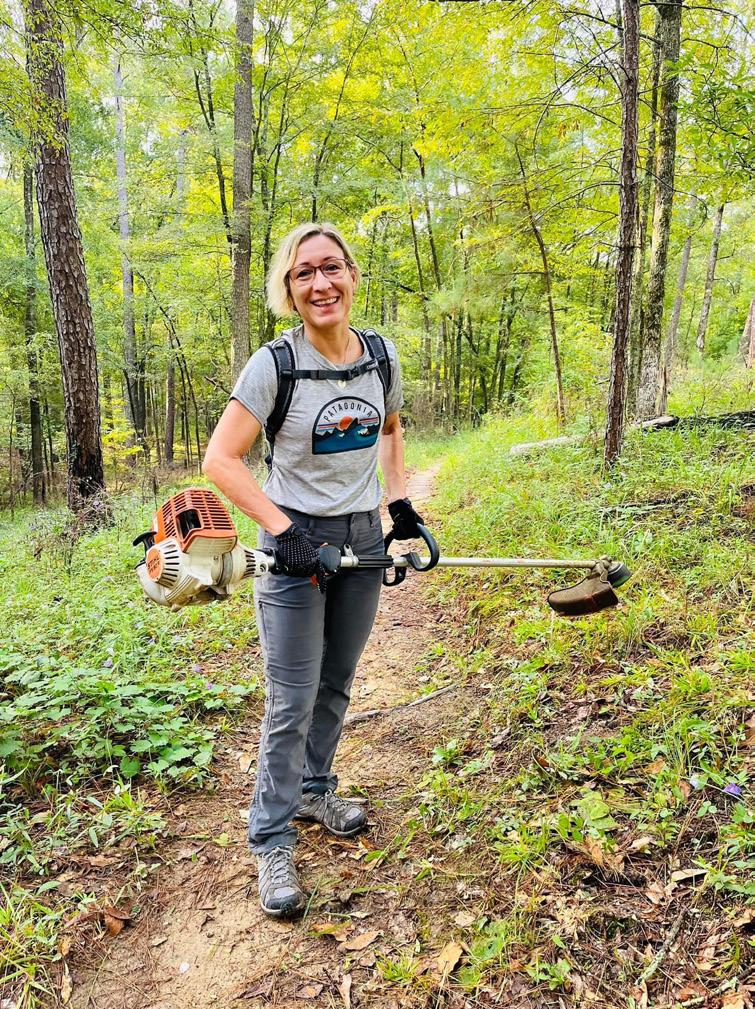
Although FATS is relatively new, having been built in 2009, planning for FATS dates back to at least the 1990s. The trail system was proposed as part of the “Mecca Regional Trail Plan,” covering South Carolina’s McCormick, Edgefield, Abbeville, and Greenwood Counties. The local communities in these counties realized that there was a need for a destination mountain bike trail system, not only to improve quality of life for local residents, but also to serve as a potential economic draw for these communities. Local residents often come to FATS before and after work and as Paul Farrow points out, “there are many different state license plates in the parking lot on any given weekend.”
In terms of tourism and economic development, although FATS is located entirely within South Carolina, the trail system is an important contributor to the ever-growing outdoor recreational economy of the larger Augusta metropolitan area, which includes several counties in Georgia as well as South Carolina (combined population over 600,000). Drew Jordan, owner of Andy Jordan’s Bicycle Warehouse in Augusta, shares that “Being a resident of North Augusta and having FATS in my backyard is a true asset to me and my family. While FATS is very important to me on a personal level, it is also an important part of my business as a local bicycle shop owner. Not a day goes by without discussing FATS with customers and visitors. Be it suggesting routes, getting folks set up on a rental to go enjoy the trails for the first time, or matching someone up with a new mountain bike to experience all FATS has to offer.” As a tourist magnet, the contribution of FATS to the local economy is felt throughout various sectors, as tourists take advantage of the many local restaurants, hotels, and other businesses catering to them. Being relatively close to Atlanta, Charlotte, Greenville, and other regional population centers means FATS will likely continue to grow in popularity as a recreational destination and will continue to provide positive economic impacts to the region.


Even though FATS serves as a popular attraction for people coming to the area, FATS isn’t the only recreational opportunity for folks to enjoy on the Sumter National Forest. The Long Cane District alone has approximately 120 miles of trails, including horse trails, off-highway vehicle trails, hiking trails, a canoe trail, and other biking trails. In addition to trails, the Long Cane Ranger District offers an abundance of other recreational sites and activities for individuals, families, and groups to enjoy, including:

Parsons Mountain Recreation Area (camping, fishing, picnicking, boating, paddling, and hiking)

Lick Fork Lake Recreation Area (camping, fishing, picnicking, boating, paddling, and hiking)

Beaver Dam and Candy Branch Rifle Ranges (recreational shooting)
Boat ramps for motorized boat access to the Savannah River, Little River and Long Cane Creek
Primitive dispersed camping (free permit required)
Countless opportunities for nature viewing, photography, fishing, hunting, and other activities

Looking beyond FATS and the Long Cane Ranger District, there are also three other Forest Service districts for you to enjoy within and near the South Carolina National Heritage Corridor. The Andrew Pickens Ranger District in the far northwest corner of Oconee County offers exceptional recreational adventures, including hikes to iconic waterfalls, primitive camping in the Ellicott Rock Wilderness, and flyfishing and whitewater rafting on the Chattooga Wild and Scenic River, one of the “Seven Natural Wonders” of South Carolina. Visitors to the Enoree Ranger District gravitate towards enjoying the Enoree OHV Trail, horseback riding in Woods Ferry Recreation Area, or hiking the middle passages of the Palmetto Trail as it meanders from the mountains to the coast. Down in the South Carolina Lowcountry, the Francis Marion Ranger District offers a variety of equally rewarding recreational experiences, including blackwater paddling through the Wambaw Creek Wilderness, bird watching in Ion Swamp, observing endangered red wolves at the Sewee Visitor and Environmental Education Center, and RV camping along the Intracoastal Waterway at Buck Hall Recreation Area. So what are you waiting for? Come on out to your National Forests and experience the very best that South Carolina has to offer!

Greg Cunningham is the Recreation Program Manager for the Francis Marion and Sumter National Forests.
Gregory.Cunningham2@usda.gov

fs.usda.gov/scnfs
Visitor Map App:
fs.usda.gov/ivm

The recent debates about sunscreens and the potentially toxic chemicals they contain has some sun worshipers skipping them altogether. While tanning is the body’s natural reaction sun exposure, sunning without some type of SPF protection can pose a health risk. Those that quickly burn and do not tan easily are at higher risk but even people that tan easily risk skin damage.
Good news, there are a number of natural alternatives to chemical sunscreens. A number of common household oils have a natural SPF. Some studies say that coconut oil has no natural SPF protection, others say coconut oil has a natural SPF of 4-6. Similarly avocado oil is rated 4-6 SPF along with olive oil, jojoba and grapeseed oil. Unfortunately, these oils alone won’t provide adequate protection for spending the day sunning by the pool, lake or on the beach.

According to the American Academy of Dermatology, your sunscreen should have an SPF of at least 30 which will block approximately 97% of the sun’s UVB rays. The Academy also recommends broad-spectrum protection which includes UVA and UVB rays as well as a water-resistant product.
So, what do you do if you want natural protection and have adequate SPF? Look for products that utilize minerals like zinc oxide and titanium dioxide as protectants. Also look for moisturizing and healing ingredients like aloe vera and shea butter. Do your own due diligence, read the labels of products before you buy. If buying online, read the reviews of other product users as well as the ingredient list.
Even natural sunscreens are generally not recommended for infants, instead keep them in the shade with their skin covered with light-weight clothing and a large-brimmed hat to protect their heads, faces, ears and necks. Before using a product on your young child, check with your medical professional for their recommendations.


The CDC recommends the following First Aid for anyone experiencing heat exhaustion: get out of the heat or sun, into cooler area or shade; sip cool water; loosen or remove unnecessary clothing including shoes and socks; apply cool compresses or have person rinse their head, face and neck with cool water. Call 911 or take the individual to a clinic or emergency room if symptoms worsen or persist.
The CDC also provides information on the more serious illness, heat stroke. Since this is a much more life-threatening illness, calling 911 and seeking emergency medical care immediately at the first signs of symptoms which include: confusion, altered mental status, slurred speech; loss of consciousness; hot, dry skin or profuse sweating; seizures; very high body temperature. While waiting for emergency medical assistance, it is recommended to cool the individual by placing in cold water, wetting the skin with cold cloths, soak clothing with cool water, and circulate the air around the individual to speed cooling until help arrives.

Start by giving the whole car a good soaking with water. Knock off the worst of the dirt, especially in the wheel wells.
Mix up the water and the soap; two cap fulls of Mother’s California Gold or Meguiar’s (or whatever someone gave you for Christmas). Grab two terry cloths, a brush, and wheel cleaner.
The steps are muscle memory now. Developed over years of washing cars alongside my dad until it became a chore I took care of myself.
When I washed other people’s cars, I hated it.
But once I had my own ride, things changed. I took a little extra time to get those tough spots where mud had splattered up or tree sap sat too long.
And I worked hard to remove the grime that collects in the interior's tiny corners. Spots no one else would notice, but to me, are what really made the car clean. There’s plenty of time to think when washing a car. The moments alone, washing, rinsing, and repeating, give me time to consider a lot of life.
Each vehicle I’ve had is unique in how long it takes to wash. For a good, deep cleaning, I always plan on two hours, at least.
As I’ve grown older and life’s problems become more complex, I reach for the five-gallon bucket when I need to sort things out. It sits under our house and holds most of the same materials and brands I used more than 15 years ago.
Now, an hour and a half from where I grew up, I do the same routine in my driveway. And like when I was a kid, I still wash someone else’s car and mine. The muscle memory comes back. I start with the roof and work my way down.
Terry cloth in hand, I begin with the passenger side fender. I do my work in sections, washing, rinsing (top to bottom so the soap doesn’t dry), and drying.
Washing a car is cathartic. It feels gratifying to put my hands to work cleaning something tangible. Most of my career has been at a keyboard, on call, or in meetings. I’ve never had jobs demanding skilled labor with my hands beyond navigating a Google Doc or Microsoft product.
So, when I can stick my hands in a bucket of soapy water and remove the road’s grit, it helps me reconnect.
I’ve worked through many problems while covering the windshield with a sudsy white layer.

I’ve taken out frustration on the remnants of bugs long dead, now in their permanent place of rest on the vehicle’s grill. The sound of a vacuum has drowned the noise of the world around me and let me focus for 10 minutes or so.
The final step is always cleaning the interior. I grab a cloth and a bottle of Griot’s and buff, shine, and clean the plastics and soft parts around the cab.
This part of the process always feels fitting. It wraps up the hard work on the exterior and brings everything together. It’s like wiping away all the mess I’ve been thinking about while doing the work.
And after all the cleaning, I’m the next one who needs a shower. Usually, I’ll take a few moments to sit on the steps and admire my work. I’ll drain a water bottle or sip on what’s left of a beer. And whatever’s been bothering me, the thing I worked in my mind while I applied the soap, doesn’t seem so bad anymore.
Like life, washing a car is best-approached bit by bit. Work on what’s before you and move on to the next part. And when it’s all done, things will be much cleaner, not so messy, or full of junk.




There is an ancient practice of organizing your environment for optimal wellness and energy flow called Feng Shui, pronounced “fung shway”. The prominent focus of Feng Shui is to maximize the positive “chi” or energy flowing in your environment to create harmony. According to Feng Shui expert and author Karen Rauch Carter, “Proper feng shui is purposefully arranging the stuff around you to gain positive results.” Ms. Carter’s book, “Move Your Stuff, Change Your Life”* makes the art and practices of Feng shui easy to understand and implement. Throughout the book, Ms. Carter stresses the importance of decluttering, organizing and cleaning your space if you want to keep positive “chi” or energy flowing through it.
Studies have shown that decluttering and organizing provides significant benefits. It can reduce stress, fight depression, improve focus, improve health habits and improve the air in your environment, just to name a few.
While Feng Shui originated long ago in the Orient, other cultures practice organizing and decluttering too. In Sweden, it is called “Swedish Death Cleaning.” As morbid as it may sound, it is truly a very positive practice for decluttering, cleaning and organizing so your loved ones are able to deal with your possessions more easily should you require assisted living in your later years or upon your death. For more information on this practice, you can read Margareta Magnusson’s book, The Gentle Art of Swedish Death Cleaning: How to Free Yourself and Your Family from a Lifetime of Clutter.*


In a recent interview with a professional organizer, Liz Kuemmerer owner of Power Organizing, LLC, it was interesting to learn how she approaches organization for her clients. “Most people become overwhelmed by the task and try to do too much at once,” said Kuemmerer, “it just seems daunting when you look at organizing your entire house at once.” “If your closets, drawers, laundry room, basement, attic and garage all need organizing, most people feel like they have to do everything all at once and that’s not realistic.”
“As a personal organizer, I work to make it easier and smoother for my clients by breaking the process into manageable portions,” said Kuemmerer. As we talked, Kuemmerer recommended the following tips for getting started:
Make a list. List the areas you want organized and what tools, containers, labels, etc. you will need once you start. Bonus tip: check out inexpensive containers at Dollar Tree or Dollar General. A roll of masking tape and a sharpie can work just as well as a more expensive label maker.
Like things together. Creating containers of like items that you can sort through, and purge later can be a great first step to getting a lot of clutter or over-stuffed closets or cabinets under control.

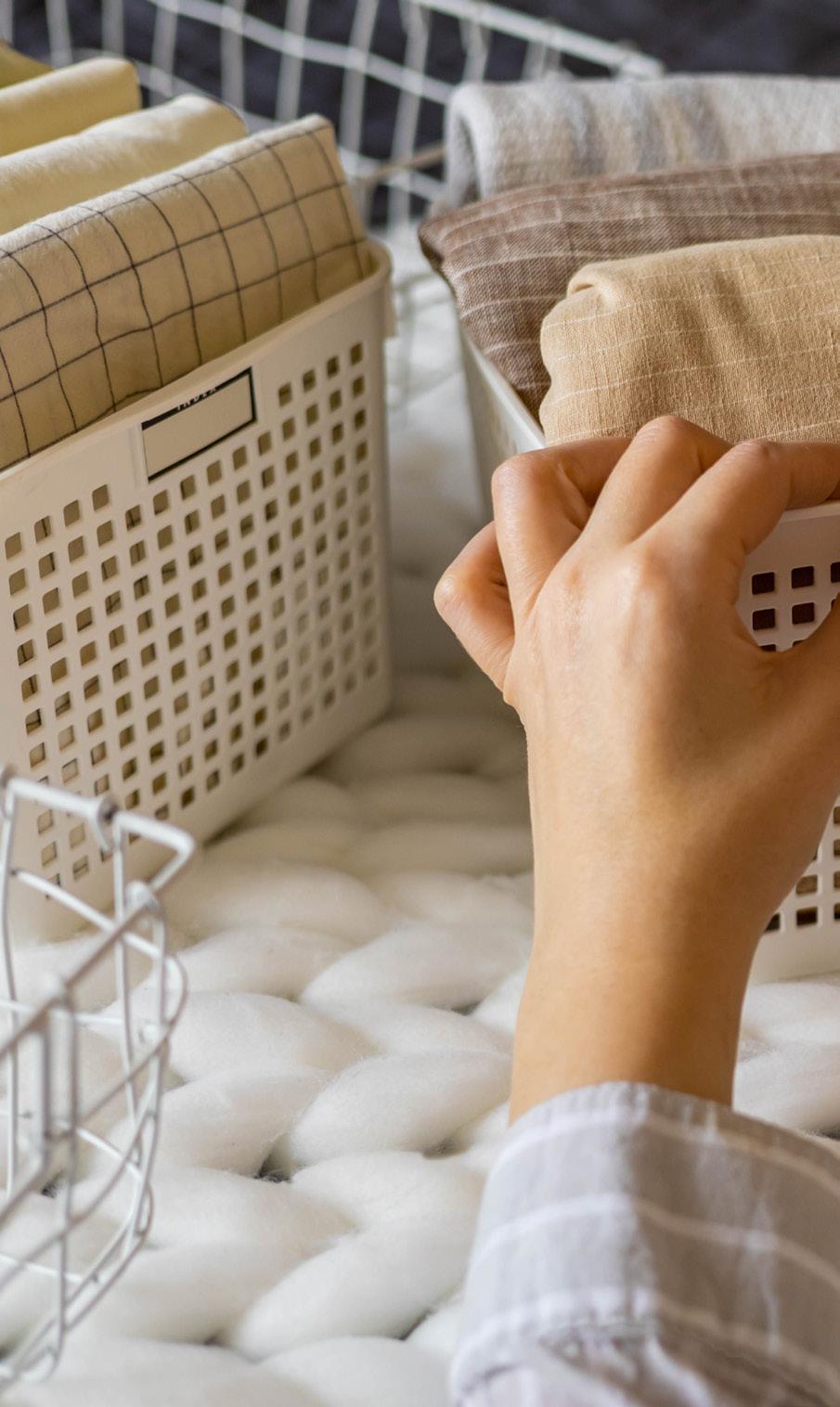
Pay it forward.
Start in one place. Pick one drawer, one closet or one kitchen cabinet and begin there. Don’t try to do everything at once because you will likely get bogged down and get little accomplished. Allow yourself plenty of time. Never start trying to organize the day before guests are arriving or before a major holiday. Choose a time when you don’t have a lot of other obligations and you can carve out a day or at least several uninterrupted hours for the process.
As you organize and discover that you have multiple numbers of a particular item or a lot of items that are no longer appealing/useful/meaningful to you, find someone or an organization that can use them and donate them. This is a great way to positively clear energies that no longer serve your needs. Often people begin to realize their good fortune of having more than they need and being able to pass on items to others is a great way to share their abundance and prosperity.




Where did you develop your skills for organization?
Kuemmerer laughed and said, “My Dad always called me ‘Busy Lizzy’.” “I honestly think that my desire to have things organized is about being responsible and in control. Growing up I was ‘the project kid.’ I was always involved in school or civic activities and keeping up with all the details in notebooks or binders was necessary for me to manage my time efficiently and be as productive as possible. I get that from my Dad,” says Kuemmerer with a smile.
How did you get into the business of being a personal organizer?
“I have always had opportunities present themselves. A project here, another there, until I finally realized how much I love helping others declutter, purge and organize that I decided to make it official by starting my own LLC,” said Kuemmerer. “One thing I believe is that most people don’t realize the energetic weight of the stuff they have. It can really stifle your energy and your life when the cabinets, closets, drawers, etc. are stuffed and in disarray.” “Also, I often see that stuff is tied to many of my clients’ emotional baggage,” said Kuemmerer. “It is very satisfying to me to help someone clear away those things that often carry the weight of unhappy times or relationships. Once the items are organized, purged and cleared away, new energy begins to fill that space more positively for my clients.”
What do you feel is most important about helping others organize, declutter and purge?



“The number one thing I tell my clients’ is that everything has a purpose, even if that purpose is over for them, the item can have purpose and value to someone else. I tell my clients’ to make sure the things they want to organize and keep should have a purpose or meaning for them. I also tell them that, no matter what I may think, their stuff needs to be organized the way they want it. It’s their stuff, their life that we are trying to organize, not mine, so I make recommendations, but they make the final decisions,” says Kuemmerer.
What services do you offer besides organizing?
“As I began to do organizing for clients, that led to helping clients downsize, especially if they were moving. It is often very difficult for someone that has lived in one home for decades to deal with the process of downsizing to a smaller living space and I help with that,” said Kuemmerer. “In addition, with my own mother, I had to learn how to make a living space ADA accessible, so I am now able to assist clients with that process.”
Decluttering, organizing, and purging those items that are no longer useful, meaningful or purposeful can help people become more comfortable in their space, more productive, and less stressed. Liz Kuemmerer has taken a life-long love of organizing and turned it into a successful business venture. For more information, you can contact her at powerorganizingllc@gmail.com. Kuemmerer currently works all around the Upstate of South Carolina, North Georgia, Western North Carolina and Central Florida.



*Both books referenced can be purchased on Amazon.com


 USC Gamecock football weight-training facility.
USC Gamecock football weight-training facility.
Excepting a several-year hiatus in the 1990s when I was married, I’ve been going to the gym off-and-on since I was 18. I was even a fitness instructor at a gym for six months before entering Uncle Sam’s Marine Corps in the early 1980s.

The gym is, and has always been, one of my great escapes, second only to Sunday School. All the troubles of the world are left at the door when I walk into the gym. There is a unique air of competition – primarily with oneself – in the gym where one’s greatest recorded accomplishments often may be every bit as remarkable as one’s professional achievements, though gym successes (unless you are a competing powerlifter or a professional fighter) are rarely if ever noted beyond the confines of the training facility itself.
My good friend Bruce Brutschy, a professional martial artist and fitness instructor, once told me: “You’re only competing with your previous work-out
[Regardless of the occasional slump you may feel you are in]. If you’re better than your most recent work-out, you’re making gains.”
Gains indeed, small and great, years in the making: And superstars abound, usually known only to one’s fellow gym rats (forgive the overused idiom).
I’ve been blessed to have trained in some of the finest fully equipped gymnasiums in the world: many of them on military bases (the ultimate gym was at Marine Corps Base Camp Pendleton, CA, another at MCB Camp Hansen, Okinawa); some small weight-rooms aboard various ships at sea; a dirt-floored ironworks covered in camouflage-netting at a forward-area battle position in Al Anbar, Iraq during the war; the Richland County Sheriff’s Department’s Special Response (SWAT) Team gym in their proverbial bat cave (the location of which I won’t disclose); the old downtown Columbia YMCA (where I was reputedly “the fastest man on the speedbag”); and years ago I was twice invited to work-out in the Gamecock football strength-andconditioning facilities at Williams-Brice Stadium in Columbia.

I LOVE THE GYM, which is why it baffles me when people regularly work-out at the gym yet say they hate it.
At the particular gym I frequent these days, the air is always cool, clean, and fresh. It’s a far cry from the old days of overpowering Ben-Gay smells, chalk dust, giant fans, and stifling heat. Today, all the training spaces are air-conditioned and there’s the distinctive smell of post-COVID sterilizing wipes and disinfectants as well as the faint scent of eucalyptus and chlorine wafting from the sauna and pool area.
As in most gyms, the sounds of the weightroom include the smacking of iron plates being loaded one against another (I love that sound), the controlled crash of weight-laden bars either thudding to the rubber-matted deck or slamming hard into a steel rack, the slight squeak of pulleys and levers from the machines, stacks of machine-weights rising and then striking the base, the primal grunting of lifters, and the different types of energy-generating music depending upon which staff-member is working on a given day.
If I feel bad going in, I almost always start to feel better once I swipe my card at the front desk.
At the gym, I see friends who rightly know never to talk about work (mine or theirs). We do however talk about working out. We sometimes talk about ballgames (actually we talk a lot about ballgames) and we talk about women and our favorite foods, but that’s about it: Except for God: Sometimes some of us talk with each other about God.
At the various benches and stations in the gym, I whisper little prayers to God or I recite previously memorized short Bible verses before a particularly heavy lift, even prior to lighter lifts. I think I’ve seen others doing the same.


Recently after a particularly arduous set on an incline bench, an anonymous lifter approached me, glanced over my shoulder and said: “He’s got your back.”
“Who?” I said, catching my breath.
“Jesus,” he responded, smiling, before turning back to his own bench.
There are a lot of banged-up, bearded, tattooed, 30-something-year-old formerly deployed Marines and a few Army guys where I work out. We all seem to gravitate toward one another, though at nearly 64 I’m by far one of the oldest rats in the barn.
There are only one or two other guys maybe older who make a regular appearance at the gym.
There are a few former college football players who sometimes ‘spot’ me – and I spot them – a handful of high school baseball players, an assistant high school football coach, occasionally sheriff’s deputies (more often than not those who serve on the tactical team), and off-duty firefighters with their always-crackling emergency radios.
There are women too, though not very many in the free-weight area: Most are participants in the pilates or cycling classes which I am not. Of the few women who do venture into weight training, some are attractive to be sure and they largely keep to themselves.
There is also a relatively young guy –probably in his 30s, but hard to tell – who prematurely suffered a mildly debilitating stroke many years ago. But he’s there making the effort, without fail, several times a week, and he makes it a point to approach everyone, hug them, and proclaim: “God is good.”
Everybody at the gym is upbeat and encouraging. There are a few huge powerlifters who in passing say things like, “S’up brother” and “Stay strong.” Sometimes it’s just a nod of the head or the occasional fist bump.
In the locker room nobody talks. Most men don’t talk a lot in restrooms and locker rooms. We just shower, change clothes, and check phone messages. Some guys are at the sink shaving. Behind them and overhead are wall-mounted, sound-muted TVs flashing highlight reels from ESPN or ESPN2.
The gym is the only place where I hear songs playing throughout that I would never
otherwise hear like, “I’m in love with an emo girl.” Though I’m not quite sure what an “emo girl” is.
Because of my age, all of the late teenaged and early 20-something-year-old white boys call me “sir.” All of the similarly aged black boys call me “pops.” Both are expressions of endearment and respect.
I actually hate it when I leave the gym, because I’m going back into the harder, expectations-filled, not-always-friendly regular world, though I am emotionally uplifted by the experience of the gym and another solid workout. And, yes, I almost always whisper a “thank you” to God for the blessed time spent in the gym as I exit the door and cross the parking lot toward my car.
Dumbbells at MUV fitness. Gym with military flags.



 Sergeant Gary Ward, USMC, participates in an interservice powerlifting competition at a Marine Corps gym.
Richland County Sheriff's Department deputies work out at RCSD's crossfit gym in Columbia, April 2023.
Sergeant Gary Ward, USMC, participates in an interservice powerlifting competition at a Marine Corps gym.
Richland County Sheriff's Department deputies work out at RCSD's crossfit gym in Columbia, April 2023.
Summer is all about fun in the sun and vacations with family and friends. Everyone loves time away from work and other responsibilities but, often, our pet family member(s) must remain behind. Higher temps make traveling with pets more challenging. Leaving a pet in a vehicle while you and the rest of the family stop to eat is not recommended when it’s really hot outside, even if you leave the windows down. Also, not all vacation spots are pet-friendly, so you must make plans for your four-legged family members while you are away.

You want your pets to be well-cared for wherever you board them and to know that the caregivers will ensure their well-being as well as their safety while you are away. Having quality care for your pets while you are out of town for work or pleasure gives you peace of mind. Laura Kennemore, of Kennemore’s Kennel, located in Oconee County, SC, offers some great tips for boarding your pet(s):

You must make reservations for your pet just as you do for yourself when you are traveling. Obviously, holidays and summer months tend to be busier times for boarding facilities, so it pays to plan well in advance and make your pet’s reservations early.

Investigate the facilities available in your area, ask questions about services offered, emergency care, food and play time.
Boarding facilities require that vaccinations are up-to-date, and copies of paperwork provided for the facility’s records. Trying to schedule vaccinations with your vet at the last minute just adds stress to your busy schedule, so plan ahead. It is also a good idea to do a trial visit with your pet at a new facility, prior to a longer stay. For example, do a day visit or one overnight several weeks before taking your pet for a longer stay. It helps everyone feel more comfortable with the arrangement. If, in the event, the trial visit didn’t go well, you would still have time to make other arrangements for your pet.
Keep your drop off as smooth and brief as possible. Your pet will pick up on any anxiousness you have so remain calm, smile and speak in happy tones.
Make sure the staff understands what your pet’s needs are and any specific medication or feeding routines required. If your pet requires a special diet, you should plan to provide the necessary food for the length of your pet’s stay. Some boarding facilities prefer for you to bring your pet’s food, even if it is not on a special diet just to ensure your pet has what it is accustomed to at mealtimes.
Does your pet require a calming chew or thundershirt? Let your facility caregiver know if your pet has any issues with loud noises, food aggression, etc.
Does your pet have a favorite toy, blanket or require a cushioned bed? Bringing a few items from home that are familiar to your pet makes its stay more comfortable. Something of yours, like an old T-shirt, is also a good thing to include as the smell of the shirt will comfort your pet while you are away. Avoid bedding that is filled with feathers or stuffing as nervous dogs will often tear them up and create a mess. Beds of this nature are also more difficult to clean once you and your pet are back home.
Most boarding facilities will provide regular updates, send photos or videos, etc. so that you can be assured your pet is doing well while you are away.
If your boarding facility is full-service, schedule a bath for your pet on the day you will be picking them up. That way your pet is clean for the trip back home. Also, if you travel a lot and board your pet frequently, this is a good signal to your pet that the boarding stay is coming to an end.
Laura’s long-standing love for animals moved her to build Kennemore’s Kennel on her family’s property. Since the kennels are located right next to her home, she and her family are always close by ensuring that your pet is “treated like family and loved on” during its stay. The kennels also have individual play areas. “For the safety of our guests, we do not socialize our boarders with other boarders during their stay. Everyone gets their own private playtime in the yard with our caregivers,” said Laura. “Our kennels are also climate controlled so you can be assured that your pet is comfortable no matter what the outside temperature may be,” said Laura.
Another feature of Kennemore’s Kennel is the discount they offer First Responders and Military personnel. “We appreciate those that have served or continue to serve and protect our communities, so we offer a 10% discount on all services to those individuals,” said Laura.


“The most important thing when boarding your pet is realizing that, no matter how well they are treated, they are still away from home so they may be a little stressed and certainly tired once they are back home with you. Just as you are often tired after a great vacation or business trip, your pet will need a little time once home to decompress and rest,” said Laura. “Any stress related issues should clear up in a day or two once your pet is back home.” For more information on Kennemore’s Kennel, visit their website, kennemoreskennel.com.

864-903-1313

























As you are planning your summer fun this year, consider your pet and its needs as well. Research your area and visit boarding facilities that are recommended to you. Do a trial visit either for a day or an overnight in advance of a long stay to see how your pet reacts and adjusts to the facility and caregivers there. Make sure your pet will receive plenty of attention, exercise and love while they are boarded and everyone will have a lot of summer fun.





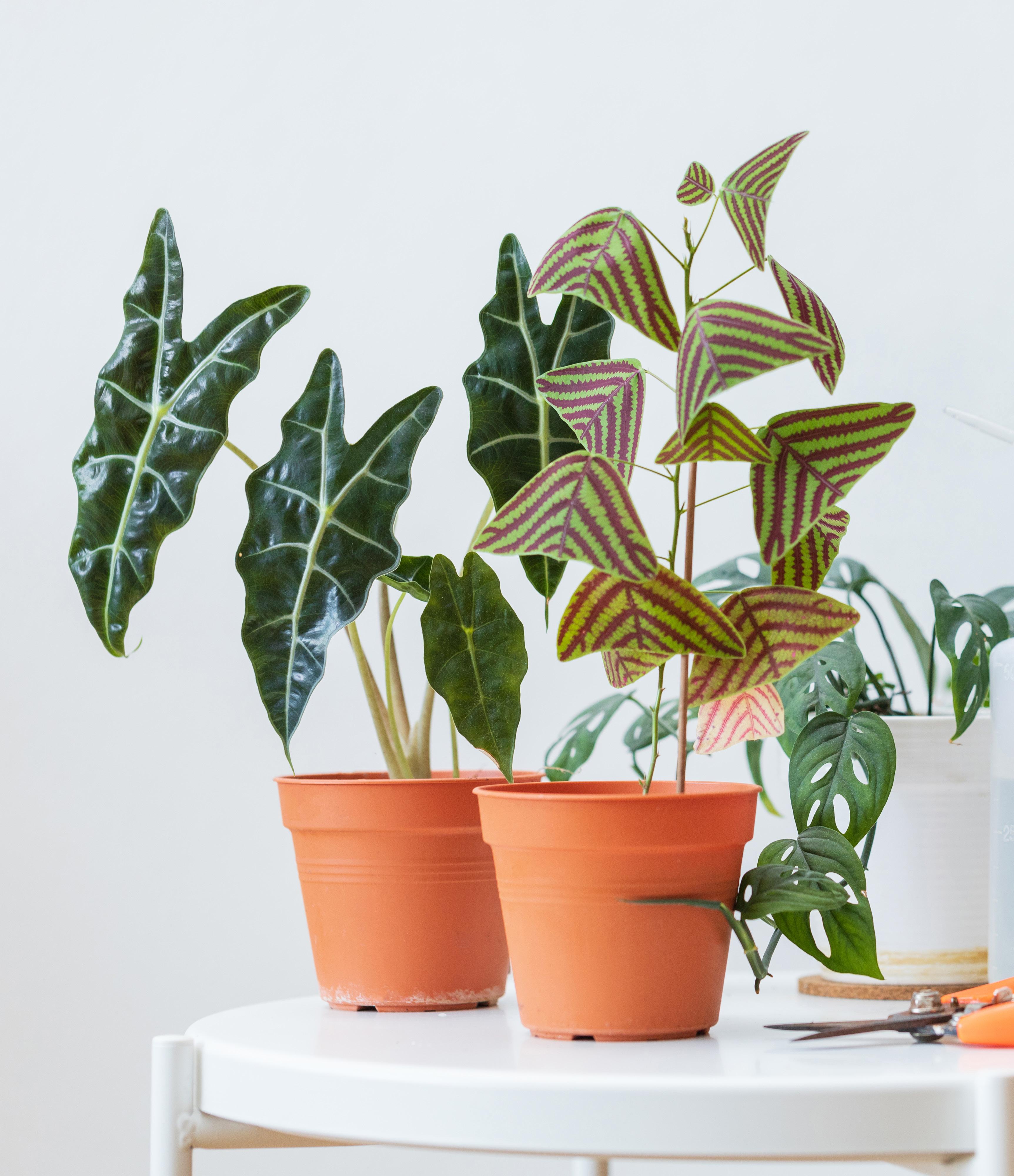


 Words by Savannah Toal & Kelly Fletcher
Words by Savannah Toal & Kelly Fletcher
Summer is the season of growth and prime time to start propagating your house plants. Propagation is not only an economical way to fill your home with greenery, but it can be a unique gift for friends and family, too! There’s nothing like the feeling of seeing your plant babies finally take root, so here are a few tips on propagating house plants this summer.
There are several popular methods of house plant propagation: dividing, rooting from a leaf, and rooting from a cutting– from there you’ll place the plant in water, a soil variant, or compost. When it comes to choosing a method, it’s really the dealer’s choice and dependent on the plant. I’ve found rooting from a cutting and water propagation to be easiest for beginners as it requires a little less attentiveness. But it’s important to remember, young plants usually require more love than mature ones do.
When propagating a plant by cutting, it’s all about the node– tiny bumps or divots where the stem meets the leaf. Some of the easiest plants to propagate by cutting are vining plants like pothos and philodendron.




With a clean, sharp pair of scissors or knife, cut about one fourth of an inch below the node.
If you’re using the water method, place the cutting in a clean, transparent vessel of fresh, room temperature water. You’ll want to change the water out about once a week and keep the propagation in indirect light. In time, something like a week to months (patience is a virtue), you’ll begin to see roots growing! Once they’re a few inches in length, your propagation is ready to plant!
If you’re using the soil/compost method, you can dip the cutting in a root hormone but it’s not necessary that you do, then place about two thirds of the cutting in a fresh pot of soil or compost. Place the plant in indirect light and keep the soil evenly moist.


Water propagation can add a whimsical flare to your space. I love to use nontraditional vessels– my favorite as of late is a glass soy sauce bottle– they look cute and you’re recycling! Think old wine bottles and empty candles– cleaned accordingly. The thrift store is also a great place to find glassware that fits your style and houses your propagations!
A flower frog is another vessel idea that I love. Taking inspiration from Ikebana (the Japanese art of flower and greenery arrangement), you can turn your propagation projects into beautiful centerpieces in your home. You can use a flower frog (a hollow apparatus with multiple holes, used to hold stems in place) to arrange propagations in a vessel of water– just be sure the nodes on the plant are fully submerged in the water and there’s enough space for roots to grow.

In some plants, such as sansevierias (snake plants) and succulents the nodes aren’t going to be as apparent. This is when rooting from a leaf can be helpful– but it’s not for the faint of heart– this method can be tricky and is most effective in the spring and early summer.
Cut the base of the leaf with a clean, sharp knife. Let the leaf cutting sit out until the cut scabs over. For sansevierias in particular, cut the base of a leaf in a V shape. Plants such as begonias and sansevierias can be propagated from part-leaf cuttings.
Because this method can be hit or miss, it’s best to drip the plant cutting in growth hormone to increase the chances that it takes. Place at least two thirds of the cutting is soil or compost and water evenly.
Cover the cutting with a clear plastic bag and keep in indirect light. When a plantlet grows, remove the plastic cover.
Some other plants that are suitable for leaf cutting include jade plants, ZZ plants, and peperomia.

When a plant gets too big for its britches or you’d just like to create a new plant, dividing is the way to go! Plants such as calathea, ZZ plants, peace lilies and umbrella grass are prime for division.

Take the mature plant out of the pot and examine the root structure. After gently massaging out some of the soil, you should be able to see which parts of the plant have their own root balls. It’s best to separate the plant by hand or with a sharp knife– just be sure to keep the roots intact!
From here, simply repot the divisions and water evenly.

Burnt out and unfulfilled by her nine-tofive, Savannah traded the corporate world to venture on her own and establish the passion-based business, Plant Savvy.

In May of 2021, Plant Savvy was founded amidst the uncertainty of the COVID-19 pandemic and continues to build sturdy roots out of humble beginnings.


The Nashville-based business’ mission is to provide insightful plant care content, aid in plant installation, and perform effective consultation and maintenancebased appointments.



July 2023 is our 4th annual SC7 Expedition. Our goal with each expedition is to promote the amazing natural wonders and outdoor recreation opportunities in our beautiful state and to raise awareness of the work happening almost daily to make our state more resilient. Our team is dedicated to being the change we wish to see in our world by living the message we preach.

During July we will be hiking from the mountains to the sea. But that’s just the tip of the iceberg. During the rest of the year we work with remarkable partners to pick up litter, clean our waterways, plant 3.4 million trees, build artificial reefs off the coast, provide environmental education programs, and more.





We invite you to join us on the trail on our public participation days. Virtually follow us daily on Facebook and Instagram. Together we will BE THE CHANGE!
 PHOTO BY MICHELLE MCCOLLUM
PHOTO BY MICHELLE MCCOLLUM
PHOTO BY MICHELLE MCCOLLUM
PHOTO BY MICHELLE MCCOLLUM




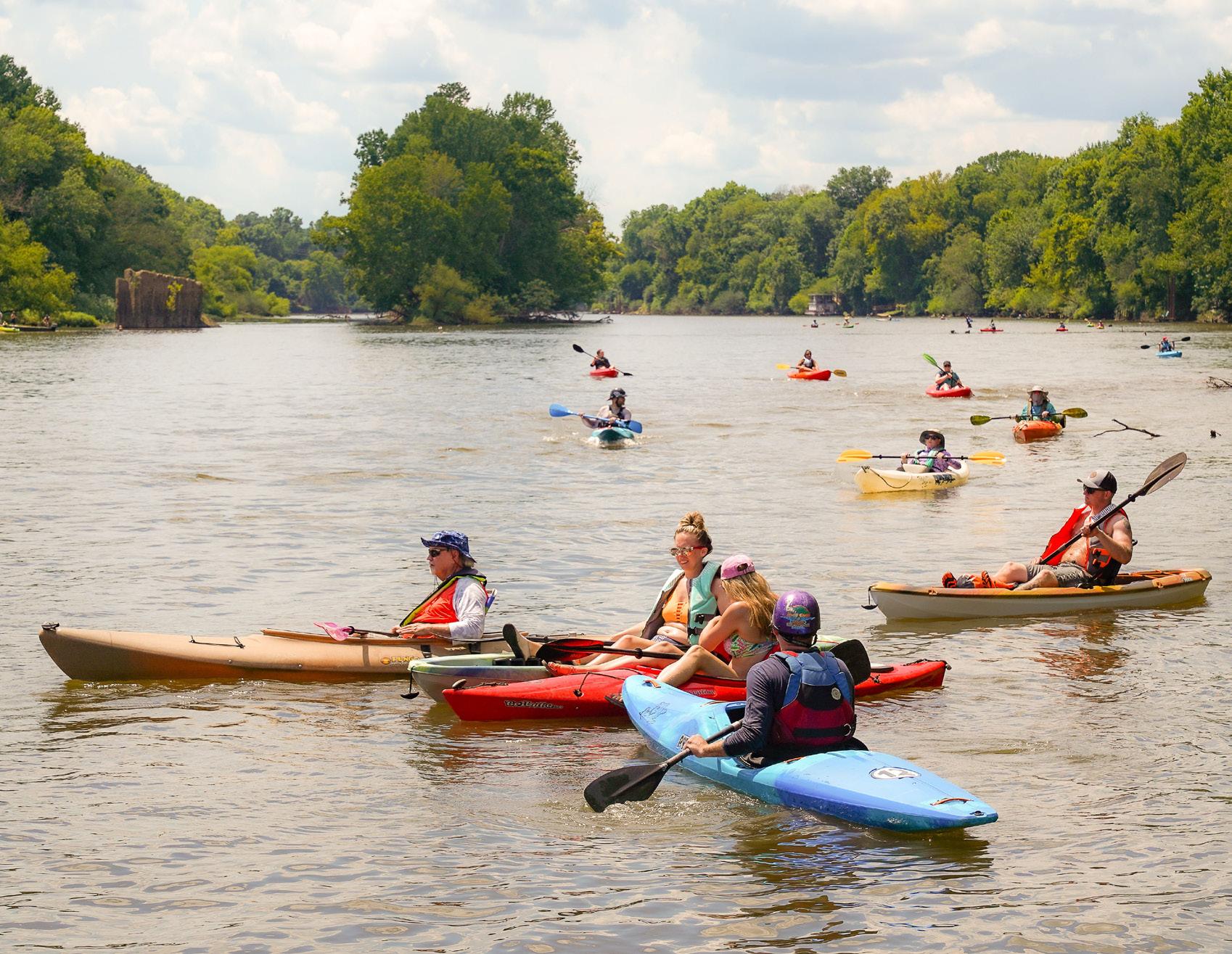 PHOTO BY MARIE GOFF
PHOTO BY MARIE GOFF
PHOTO BY MARIE GOFF
PHOTO BY MARIE GOFF
PHOTO BY MARIE GOFF
PHOTO BY MARIE GOFF
PHOTO BY MARIE GOFF
PHOTO BY MARIE GOFF








